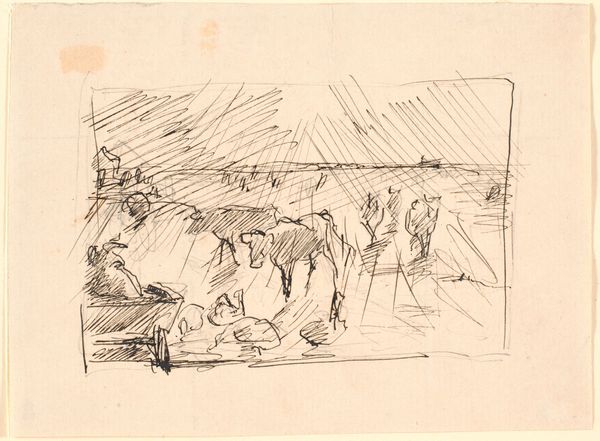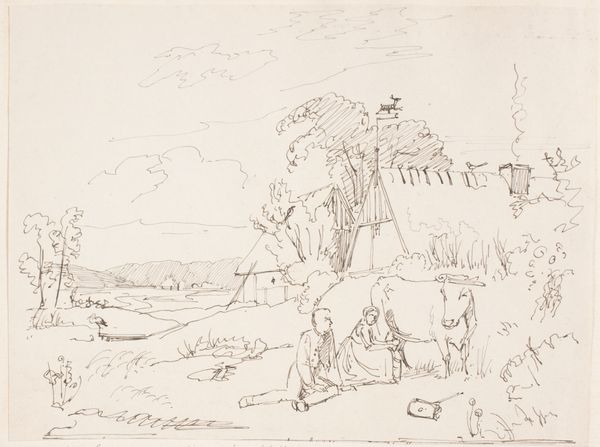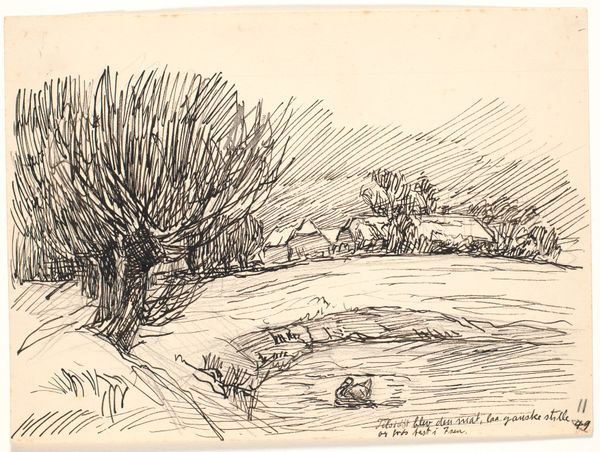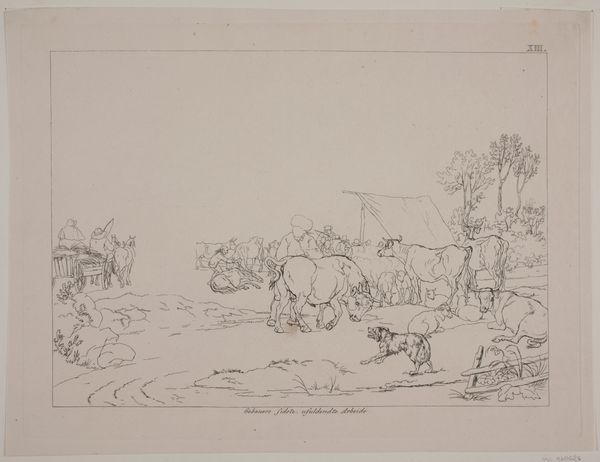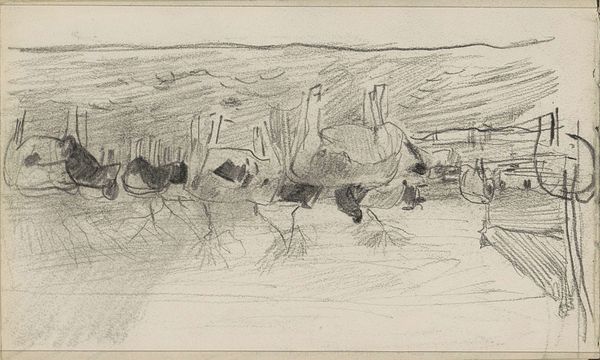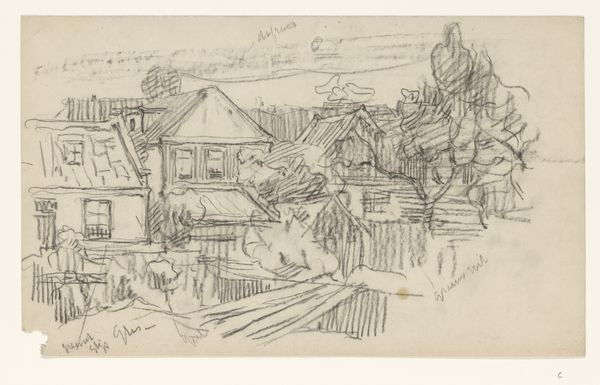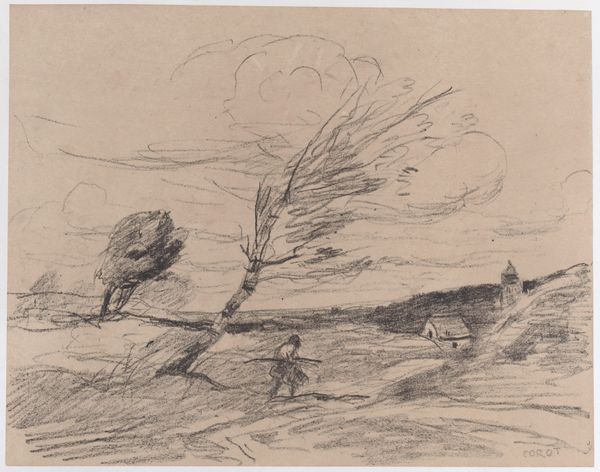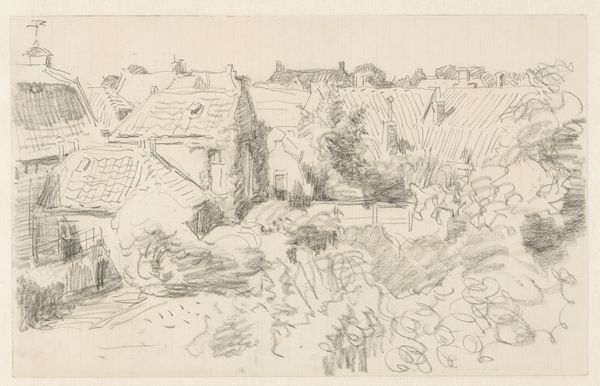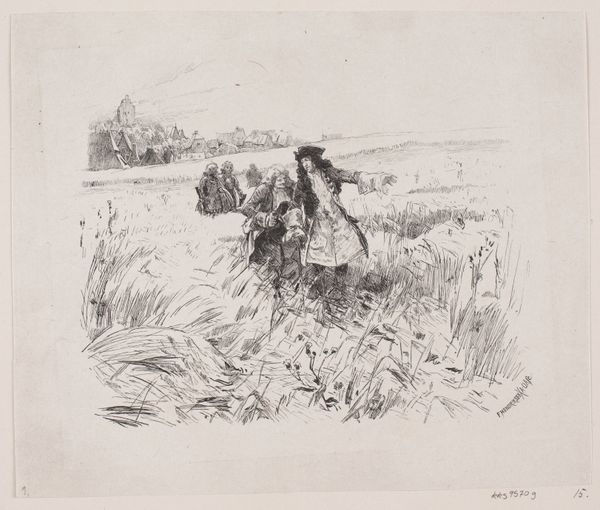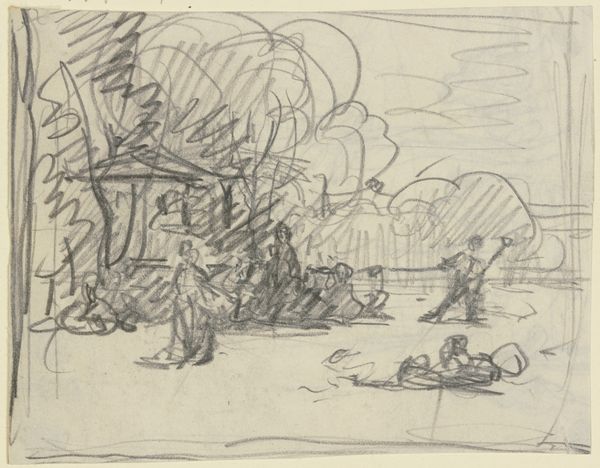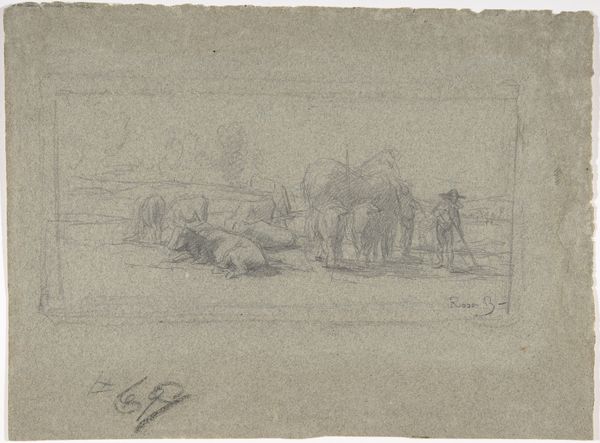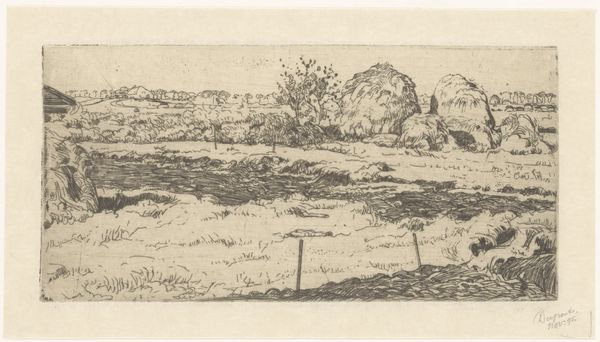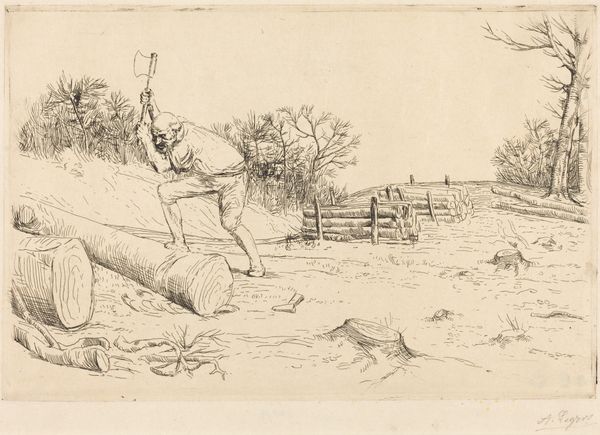
Dimensions: overall: 26.2 x 36 cm (10 5/16 x 14 3/16 in.)
Copyright: National Gallery of Art: CC0 1.0
Editor: Here we have Robert Bevan's "Gate to the Farmhouse, Pont-Aven," dating from somewhere between 1890 and 1894. It's a pencil drawing. It feels very immediate and raw, almost like a quick sketch capturing a fleeting impression. What jumps out to you when you look at this piece? Curator: I immediately focus on the medium itself: pencil on paper. It allows for incredible reproducibility; consider the social implications of printmaking at the time, this piece shares common ground with inexpensive reproductive technologies that make art accessible, potentially influencing craft. What happens when "high art" and functional drawings intersect? Editor: So, you're suggesting that the choice of pencil isn't just about convenience or speed, but maybe a deliberate statement about the art world itself? Curator: Precisely. Consider the artistic circles Bevan occupied. Pont-Aven was known as a site of artisinal labor, what does that artistic labor look like? How does it change with new technologies? In Impressionism, the act of mark-making itself is key. It values the rapid gestures which denote the effects of the weather on the stone and wooden surfaces, emphasizing change and production over the thing itself. Editor: That makes me think about how quickly he must have worked to capture this. The drawing style shows an attention to the textures of everyday materials in the countryside, such as that rocky wall. Curator: How do these observations on rural material and labour practices resonate in an increasingly industrialized era? Does this depiction carry a nostalgia or critique of such settings? Editor: So it's about looking beyond the simple landscape, understanding the artist's hand, the available resources, and also the social context that allowed this drawing to be made. Fascinating. Curator: Exactly. We move past aesthetic appreciation and see art embedded in a web of material conditions and socio-economic relationships. I find this reframing shifts my whole perspective of this work.
Comments
No comments
Be the first to comment and join the conversation on the ultimate creative platform.
